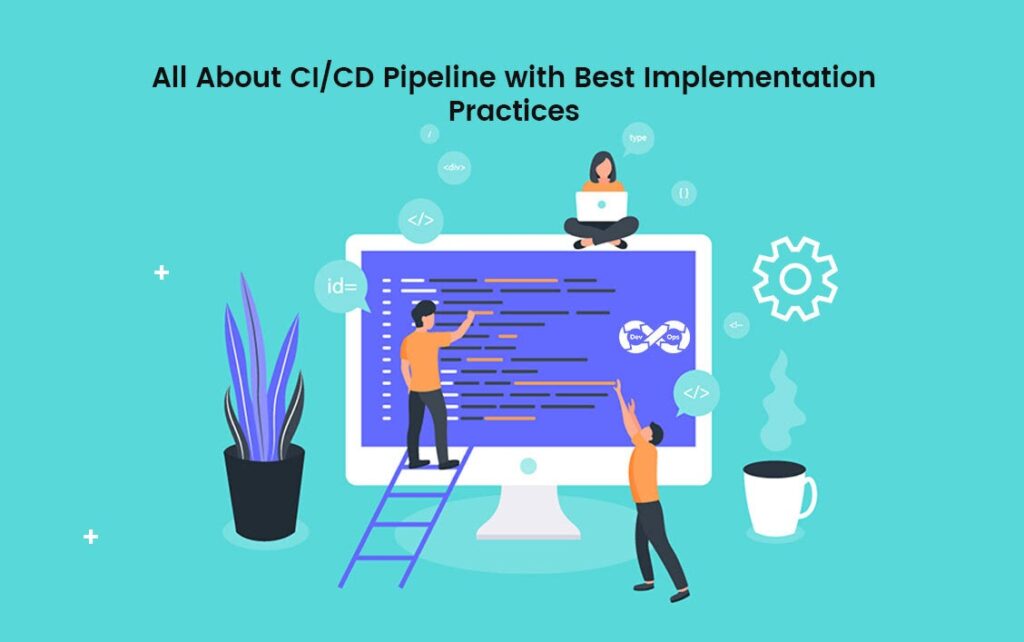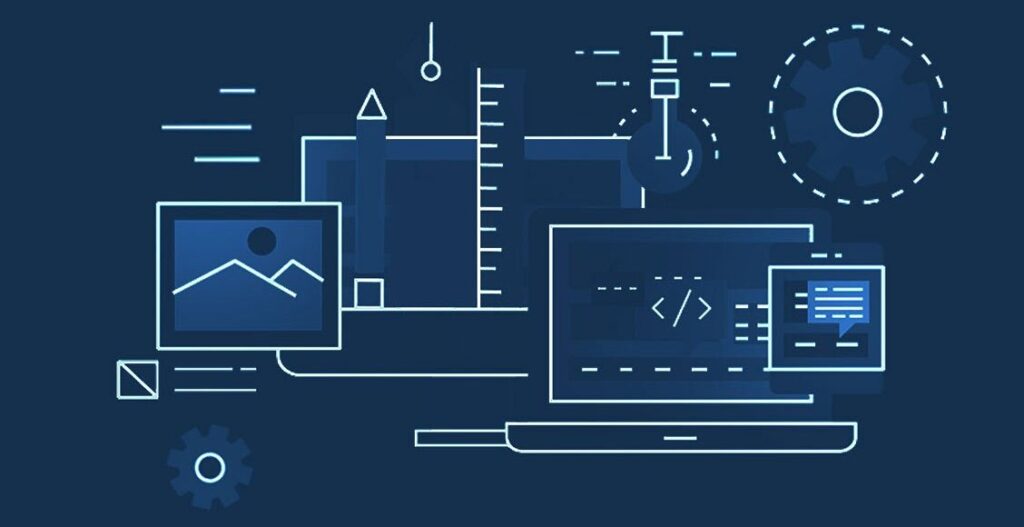
Reading Time: 6 mins.
Overview
The CI/CD pipeline, known as the Build Pipeline works on granting better visibility over the automated steps during the CI/CD process. For example, it makes use of build servers like Jenkins, Travis CI and TeamCity to achieve visibility over all the automated phases, and fetches the status and info in the UI form. Once an error has been detected via UI, it’s easy for the developers to receive a timely alert and thereby error-fixing is possible at an early stage. This way of tracking the progress of automated steps is crucial so as to ensure the fine-workings of the phases and the expected outcome.
Reasons for you to choose the CI/CD Pipelining:
The implementation of the CI/CD pipelining helps in numerous ways including, the facility to enable the developers to stay focused on writing better code rather than sparing time for some unplanned work. Everything is open and visible to the teams and product stakeholders that ensures ease of access for the concerned developers, QA team and product stakeholders. This confirms that the artifacts (with the inclusion of code changes) are stored and ready to validate at any time. Again, this facility taps the capability to roll back to the stable version at the time of any potential threats. Further, the integrated feedback loops foster experimentation and learning for the involved organization. The primary benefits of the CI/CD pipelining will include the following three things.
-
Speed
Firstly, building a code and committing it into a repository is something that takes undeniable time. Secondly, getting feedback from the end-user, yet again a thing which takes unpredictable time and thirdly, it is the capacity to meet on-demand development requirements. On the other hand, integrating an effective CI/CD pipeline streamlines the overall SDLC process and injects speed at every interval of the development process.
-
Reliability
Integrating an organized, highly-effective and on-demand CI/CD pipeline eliminates intermittent failures during the course of the development cycle. The requirements and limitations set for one project will not always match for another one, hence it is important to adopt a scalable practice. In such a way, the reliability and predictability of the developing software are made possible.
-
Accuracy
Any manual practice and trigger is error-prone and making automation possible at every juncture is important to safeguard the accuracy during the software development life cycle. Yet, how one the team possibly sure that all the automated steps are executed according to the business requirements and this is where the ability to keep track of the automated process via CI/CD tools comes to the rescue.
Best Practices to Follow for Effective CI/CD Implementation:

The CI/CD pipeline is a set of practices in Agile methodology that aims to promote automation at all possible stages of the SDLC process. According to a research company, Statista, 91% of organizations are using Agile methodology, and 88%, practising Continuous Integration and Continuous Deployment as of early 2018. Several other firms which are primarily software-centric have started using this CI/CD in their business practices. The ability to release software updates more readily and frequently and thereby, increasing the project’s velocity forms the primary reason for this pipeline’s tremendous adoption rate.
1. Retaining the development velocity
One of the major aspects which every organization fails to imbibe in their CI/CD practice is that retaining the development velocity. In the process of getting rid of the potential bugs right from the early stage, the developers may unconsciously slow-down the entire pipeline. Thus, practising a comprehensive way of testing forms crucial when it comes to implementing the CI/CD pipeline. Certain other possible steps that can be taken to solve this slow down include scaling up and down the pipeline, fine-tuning of the testing scenarios and other optimization as per your project requirements.
2. As DevSecOps, the Secured CI/CD
Since the CI/CD will have complete accessibility right from your internal aspects such as the codebase and credentials in order to deploy the build in various environments, the concern over security breaches must not be forgotten to address. Securing the internal data and safeguarding the integrity of your product is inevitable for companies of all sizes and reputations.
It is for these reasons you must ensure the conditions such as maintaining the pipeline in isolation via containerizing the internal networks, granting privileges for authorized users, setting up VPN, two-factor authentication and so forth. Thus, to put it in a single sentence, the pipeline must be secured with regard to the core principles of DevSecOps.
3. Reproduce Staging as close to Production
Reproducing the production environment as closely as possible in the form of a staging (mock) environment is necessary to find out the unanticipated hindrances which go unnoticed during the testing process. Though maintaining every nuance of the production environment is impossible, you should try to maintain and manage the essentials of the production environment as much as possible.
4. Commit multiple times but build only once
The capability to commit code several times a day is the reason behind the smooth integration process of the CI/CD pipeline. Yet, there is one essential aspect that, when performed more than once may pose a major threat against delivering a quality product. It is the mistake of performing builds more than once. Compiling/Packaging multiple times for different stages will result in creating discrepancies in the view that all those stages were not meant to build a single whole product.
5. Reduce Branching and focus on early integration
Highly known best practices about the CI/CD is to commit the code at least once a day into the shared repository. It is important because the early integration of the smaller codes daily by the concerning developers eliminates the massive and onerous integration burden before the product release.
Further, the CI/CD can perform effective monitoring and testing of the code-change only to a limited number, i.e. only to a few branches. Thus, to make the best out of the CI/CD pipeline, it is wise to reduce the branching as much as possible and thereby, to spend low time on the version control.
6. Possible local testing before committing a code
It is important to test locally as much as possible as this ritual helps you to identify and overcome some of the potential defects that may later have its impact on your fellow developer’s code. One of the primary habits which must be acquainted by the developers in the process of CI/CD implementation is performing as many local tests before committing each code. In this way, the new code/code-change committed by a developer into the shared repository will not knock down the existing other developer’s code. Hence, the more you run local testing, the less you end-up solving bugs during the staging and production environment.
7. Prioritize running fastest tests
As suggested earlier, you should spend time more on the development process than on version control, and the ultimate aim must be fixed at increasing the project’s velocity. One such way to achieve this momentum is by running the fastest tests earlier. You must decide what to test earlier and what later. Finishing up the compiling process, timely Unit testing and Smoke testing with a follow up of Functional testing, and UI testing may contribute to a larger extent in pacing up the momentum. Apart from this, one good way to avoid bugs and slow-down is to run instant testing for whatever new feature or change you’ve built.
8. Getting the right tool
Using the right tool also plays a vital role in the effective implementation of the CI/CD pipeline. Knowing that CI/CD is a high tool dependent one, choosing the best tool is crucial as an inclusive tool leads to a robust implementation of continuous integration, testing, delivery/deployment. Some of the leading tools are Jenkins, Travis CI, GitLab CI, TeamCity, Codeship, Circle CI, Screwdriver, Spinnaker.
Other tools include:
- Concourse CI
- Buddy
- Thoughtworks
- Bamboo
- Hudson
- Perforce
- UrbanCode Deploy
9. Flexibility to roll-back with a right version control
You may end up facing a situation where a reported bug was not found in the previous release of the software but did exist at this point of time. This occurs because of various reasons; one of the main reasons would be the adversity of an early fix. During such instances, the flexibility to roll back to the previous stage must be allowed so as not to lose any potential developed feature. This smooth roll-back can be done only with the help of the right version control system.
10. The need for timely documentation
The most important yet often ignored practice is the documentation process. Though it may seem to be a trivial one, it plays a huge role in a project that is dynamic in nature. You may not know, but along with your project’s evolution, the course of the execution does undergo considerable changes. It is mainly because of this reason you may need to create comprehensive documentation with detailed information such as the used framework, methodology, tools, technologies and involved team to work on the test scripts and so forth.
The Wrap-Up:
Having dealt with all the crucial aspects that make the Continuous Integration and Continuous Deployment/Delivery such as reasons to go with the CI/CD pipeline, its work-flow, best practices to follow and so forth, the next step is all about real implementation of CI/CD in your SDLC process. Have no idea about the CI/CD implementation, and what does it take to deploy it? Visit, All about CI/CD Implementation and Why Does It Matter Being the best go-to implementation by popular IT firms across the world, CI/CD pipeline contributes to producing quality software and shorter development lifecycles.